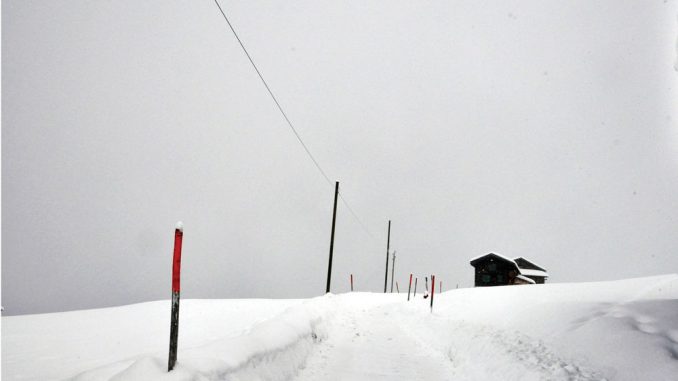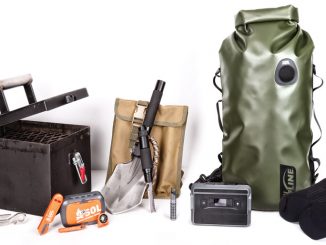
Owning the knowledge of how to find or build shelter in any environment before an emergency strikes is an essential skill set everyone should possess. Trying to learn these lessons after an emergency occurs could turn what should have been a simple lesson learned beforehand into a series of mistakes—possibly with fatal consequences.
Any type of shelter, whether it is a permanent building, tent or a debris shelter, should satisfy five basic criteria to maximize effectiveness and safety:
- It should offer protection from the elements.
- It should be free from natural or man-made hazards.
- It should offer a stable platform and construction.
- It needs to retain heat.
- It needs to offer good ventilation.
1.0 SAFETY FIRST
When you are searching for a location to set up your shelter, whether on the ground, under a tree, in an abandoned building or in a cave, remember that you might not be the first creature to claim that spot as home. Keep an eye open for other inhabitants (bears, coyotes, lions, rats, snakes, people, feral dogs or cats, etc.), and then either evict the current tenants or find yourself a new abode. Other concerns from animals might be disease from scat or decaying carcasses, so even after you have cleared the area of unwanted guests, be sure to clean the area up the best you can before making camp.
2.0 SHELTERING IN A VEHICLE
In the initial hours and days after a catastrophic event takes place, you might have to use your vehicle as your shelter. If this is the case, there are a few vehicle usage habits you should adopt.
2.1 Vehicle Operation
2.1.1 Practice good fuel conservation, as well as noise and light discipline, by keeping the engine off unless you are driving.
2.1.2 If you have to pull over to get some sleep, you don’t want to draw unnecessary attention to your vehicle. Be sure to find a place out of sight to park.
2.1.3 Always “combat park”—orient the front of your vehicle toward your direction of travel so you can make a quick getaway without having to back up.
2.2 Winter Weather Considerations
2.2.1 In a winter survival situation, if you are in your vehicle. you need look no further for shelter. If possible, and assuming you want to be found, don’t leave your vehicle, because search parties will likely find your car long before they find you.
2.2.2 Keep the vehicle’s tailpipe from getting covered by snow, because it will cause potentially deadly carbon monoxide buildup in the vehicle.
2.2.3 Open the windows slightly to allow fresh air to circulate.
2.2.4 Keep snow from piling so high on your vehicle that it is not recognizable to search parties.
2.2.5 While the inside of your car will protect you from precipitation and wind chill, it is mainly made of metal, plastic and glass. These materials are conductors, rather than insulators, and will dissipate heat faster than your body can produce it. Because of this, you need to do anything possible to stay warm—including tearing open the upholstery and using the foam cushions and other materials to stuff into your clothing to preserve heat.
3.0 STAYING HOME
In many ways, if you’re able to remain in your home for the duration of an emergency, you’ll be way ahead of the survival curve. Familiarity with your surroundings and neighbors, as well as access to virtually all of your possessions, can make working through a disaster less overwhelming and more manageable.
3.1 If your emergency disaster plan is to hunker down at home, be prepared to sustain yourself for three or more days or until you can be safely evacuated by the authorities.
3.2 Most disasters have many secondary and tertiary effects that could cause you to have to hunker down for far longer than just sitting out a hurricane or tornado.
3.3 FEMA suggests keeping three to five days’ worth of food and water on hand for emergencies. I suggest keeping an absolute minimum of a 15-day supply of extended-shelflife rations that provide 3,000 to 5,000 calories per person per day. Store 2 gallons of drinking water per person per day in a cool, dry location in which it will remain the safest in the event your home suffers structural damage.
4.0 PUBLIC SHELTERS
While public shelters and FEMA “tent cities” can be viable means of finding shelter and a good way to get help, when it comes to a catastrophe of more-epic proportions, the system can easily become overloaded—and even apex to a dangerous level—when there are not enough resources to serve those housed.
4.1 FEMA, the National Guard, the military and many other government agencies can all be expected to take part in any massive-scale rescue efforts, but they might not be available as quickly as one would think. (If you don’t believe that, just ask someone who lived in Puerto Rico in late 2017 and 2018.)
4.2 You can expect that soon after key avenues of approach are reopened, and immediate hazards (such as downed power lines or broken gas lines) are repaired, FEMA will set up emergency shelters to start housing displaced citizens. Don’t expect this to happen overnight. It truly will depend on the size and scope of the emergency, as well as whether functioning central and local governments are still in place.
4.3 Identify local public shelters in your area now so you will know where to go when the time comes. In many places, schools and hospitals are all designated as emergency shelters in the event your home is no longer a viable option to provide shelter.
4.4 Expect competition for resources to begin as soon as either the amount of resources on hand is outpaced by the needs of the populace or, more commonly, when the distribution systems and logistical challenges cause a bottleneck in aid distribution. It has been my experience that this is when you tend to see the uglier side of humanity. Ultimately, all of this will be situationally dependent and will dictate the decisions you make when seeking shelter after a catastrophe. The best thing you can do is remain vigilant, have good situational awareness, and let the scenario dictate the choices you make.
5.0 SHELTER CONSTRUCTION
If you have to build your own shelter, there could be plenty of constraints on your options. Materials, time, weather and your ability to bring some shelter components with you will all factor into the type and suitability of your initial structure. In some cases, it will be prudent to opt for something very basic that you can readily abandon or replace after the weather or other aspects of your situation improve.

You never know when a disaster or emergency will cause you to have to leave your home and seek shelter elsewhere, so you should keep a disaster kit packed with food, water, blankets and anything else you would need to establish a temporary shelter elsewhere.
5.1 Ventilation
5.1.1 When building a shelter, ventilation should always be a consideration, especially if you’re burning fuel for heat or cooking. This prevents the accumulation of carbon monoxide and the reduction of available oxygen. Ventilation is also needed to allow carbon dioxide that is given off when you are breathing to escape.
5.1.2 Simply constructing a vent hole is not enough; you need to continuously check to ensure your vent is doing its job of letting carbon-rich air escape to be replaced by clean, “fresh” air for breathing. Snow, ice, dirt and debris can easily clog your ventilation hole and cause asphyxiation and death to anyone who is inside the shelter.
5.1.3 Don’t assume that natural shelters have adequate ventilation. Many caves have natural gas pockets in them that can be noxious or fatal if encountered.

If you have to use your vehicle as a shelter in an emergency scenario, depending on the security situation, you should consider keeping one person awake as a sentry and to provide protection from any threats that could be present.
5.1.4 These gas pockets also can put you at serious risk of blowing yourself up if you are using fire or a spark of any sort. If you smell rotten eggs—beware! It is probably gas!
5.1.5 The same goes for man-made structures, particularly after a catastrophic event has taken place. Ruptured gas lines and heating oil tanks, smoke, noxious fumes from rotting corpses and a plethora of other air quality threats could be present when you are looking for a new place to call home.

Chances are that in a disaster scenario, you will not have running water. Keep a 15-day supply of drinking water, figuring 2 gallons per person per day, in a cool, dry and structurally safe location.
5.2 Location, Location, Location
5.2.1 Shelters should not be built in areas with the potential for avalanches, mudslides, falling rocks or under “widow-makers” (dead trees or branches that might fall on your shelter).
5.2.2 In urban settings, avoid buildings that appear to be damaged structurally, because they can give way without warning and leave you buried under tons of rubble.
5.2.3 Depending on the threat situation, you might want to avoid silhouetting your shelter: If possible, don’t locate it in large, easily visible clearings or on hilltops or rooftops.
5.2.4 Make sure your shelter location has both ingress and egress routes in the event you need to leave the area quickly.
I SUGGEST KEEPING AN ABSOLUTE MINIMUM OF A 15-DAY SUPPLY OF EXTENDED-SHELF-LIFE RATIONS THAT PROVIDE 3,000 TO 5,000 CALORIES PER PERSON PER DAY. STORE 2 GALLONS OF DRINKING WATER PER PERSON PER DAY IN A COOL, DRY LOCATION …
5.2.5 When establishing a shelter in the wilderness, and assuming your security situation is such that you’re not worried about a fire giving away your position, try to be within close proximity of a fuel source for cooking, purifying water and heat, as well as a water source for drinking and hygiene.
5.2.6 The rules don’t really change that much if you’re in an urban setting. If you need to take shelter from civil unrest; provide cover and concealment from an enemy force; or for protection from the weather, you must still ensure it is located in a stable and relatively safe location that provides good ventilation and strong construction.
5.2.7 Consider that the forces your shelter might need to withstand could be far greater than just wind and snowflakes. In a severe human-threat scenario, you might need to find a shelter that provides effective cover from a variety of projectiles and explosives. Great care needs to be put into your shelter’s site selection under these types of situations.
5.2.8 On the other end of the security spectrum, in a wilderness survival scenario where your ultimate goal is to get back to society, not avoid it, you should do everything in your power to be visible to search parties or aircraft flying in your vicinity.
5.3 Efficiency Is Key
5.3.1 One major shelter construction consideration at colder times of year in the wilderness should be the size of your group. Build your shelter big enough to fit each person and their gear, but no bigger, and keep the ceiling low to increase heat retention.
5.3.2 In an urban setting, you can use this same rule by building a shelter-within-a-shelter in order to conserve heat.
5.3.3 Help preserve heat by using some type of insulation to retain warmth, thus preventing the waste of precious fuel. If your area has snow, use it to create a thermal barrier by applying about 6 inches to the sides and roof of the shelter for additional heat conservation and camouflage.
6.0 GENERAL ARMY SHELTER PLAN
In the U.S. Army, when a squad needs to find shelter, its members follow a standard plan that maximizes shelter construction efficiency and addresses all the secondary and tertiary concerns associated with their mission. It results in a relatively immediate shelter solution and allows for enhancements as time and the situation dictate.
6.1 Make a “patrol base”—an area that allows 360-degree security in which the group can prepare to conduct operations while being far enough away from the “enemy” so that everyone is out of sight and earshot.
6.2 Establish priorities of work that consider the greatest threats and most-pressing tasks that need to get done (food, water, cover from the elements, rest and so on). Then, determine the order in which tasks need to be completed. When all the immediate tasks are complete, the rule of thumb is that you continue to improve on your position whenever there is a lull in more-important tasks.
6.3 These actions are sound practices that are easily transferable to either a wilderness or urban survival scenario. They help get, and keep, the group organized and focused.
7.0 PERSONAL SECURITY
Another area of concern is security. People will get increasingly desperate after something such as a grid-down event—particularly if they think they will not have to answer for their actions.

FEMA and other agencies or organizations may set up emergency shelters to start housing displaced citizens after a catastrophe. Don’t expect this to happen overnight.
7.1 Movement
7.1.1 If you live or work in an urban environment, in general, your goal after such an event should be to get as far away as possible from large populations of people until you can get a better read of the situation.
7.1.2 You should be prepared for different postevent scenarios. You might find that you need to stay in a metropolitan area for an extended time because of injury, linking up with friends or other unforeseen reasons. Or, you might be on foot and only able to make your way out of the city slowly, hunkering down to rest in the least-risky place you can find shelter.
8.0 GENERAL CONSIDERATIONS
As with all other aspects of your survival plan, there are many topics and tasks that aren’t always immediately urgent but are still important and contribute to the success of your efforts.
8.1 Communications
8.1.1 Whether you decide to stay at home or seek shelter elsewhere during an emergency scenario, make sure you have what you need to monitor and communicate with the outside world.
8.1.2 A shortwave radio, a TV and a cell phone should all be part of your disaster kit, assuming you have access to electricity.
8.2 Hygiene
8.2.1 Make sure your latrine area is not in close proximity to your water source or where you cook, eat or sleep in order to prevent possible spread of disease.
8.3 Rescue
8.3.1 In a wilderness survival scenario where the intent is to be found, you ideally want your shelter to be clearly visible from the air.
8.3.2 If you have to hole-up in a cave or other hidden spot, you should always have three smoky signal fires set and ready to ignite the moment you hear a search plane flying nearby.
8.3.3 Because disasters and other emergencies that would cause you to seek shelter rarely give you a warning, it is a good practice to keep a disaster kit stocked with all the survival essentials ready for you to grab and go in case you need it in a pinch.
9.0 CONTAMINATED ENVIRONMENTS
The need might arise for you to seek or reinforce shelter while in an environment that is already, or about to be, contaminated by either chemical, biological, radiological or nuclear (CBRN) means. While distancing yourself from the CBRN-contaminated area is your best chance for survival, it might not always be possible or practical.

Mother Nature can be particularly brutal in winter months. That makes finding or constructing a shelter imperative if you want to increase your odds of survival.
9.1 Checklist
If taking shelter in a bad environment is your only choice, follow this checklist provided by the U.S. Department of State’s Bureau of Diplomatic Security:
9.1.1 Select an inner room on an upstairs floor with the least number of windows and doors.
9.1.2 Choose a large room with access to a bathroom and preferably with a telephone.
9.1.3 Avoid choosing rooms with window or wall air conditioners—they are more difficult to seal.
9.1.4 Close all windows, doors and shutters.
9.1.5 Seal all cracks around window and door frames with wide tape.
9.1.6 Cover windows and exterior doors with plastic sheets (6mm minimum) and seal them with pressure-sensitive adhesive tape. This provides a second barrier if a window or door breaks or leaks.
9.1.7 Seal all openings in windows and doors (including keyholes) and any cracks with cotton, wool or wet rags and duct tape. A water-soaked cloth should be used to seal gaps under doors.
9.1.8 Turn off all window and central air and heating units.
Editor’s note: A version of this article first appeared in the Prepper Fall, 2018 print issue of American Survival Guide.





Be the first to comment